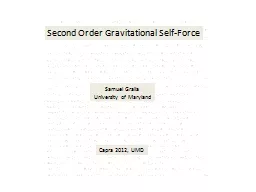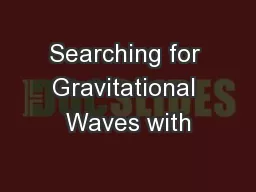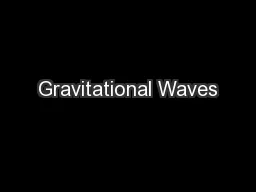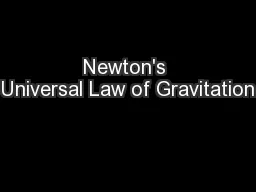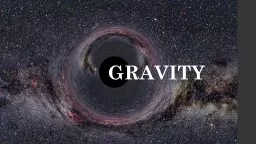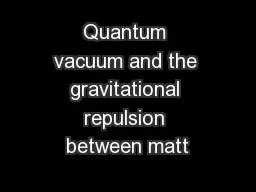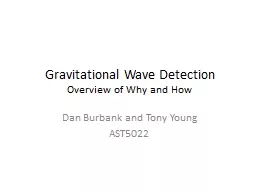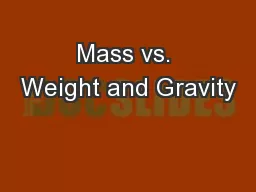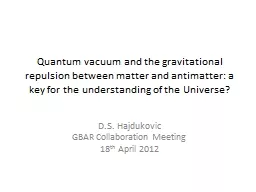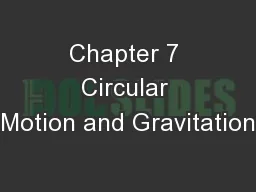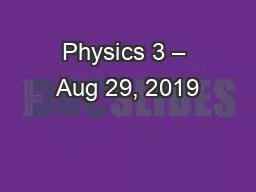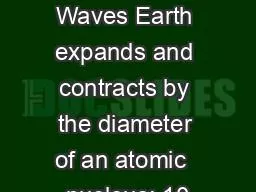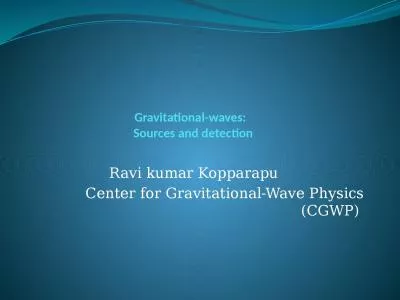PPT-Second Order Gravitational Self-Force
Author : natalia-silvester | Published Date : 2017-05-28
Samuel Gralla University of Maryland Capra 2012 UMD Motion of Small Bodies Consider a body that is small compared to the scale of variation of the external universe
Presentation Embed Code
Download Presentation
Download Presentation The PPT/PDF document "Second Order Gravitational Self-Force" is the property of its rightful owner. Permission is granted to download and print the materials on this website for personal, non-commercial use only, and to display it on your personal computer provided you do not modify the materials and that you retain all copyright notices contained in the materials. By downloading content from our website, you accept the terms of this agreement.
Second Order Gravitational Self-Force: Transcript
Download Rules Of Document
"Second Order Gravitational Self-Force"The content belongs to its owner. You may download and print it for personal use, without modification, and keep all copyright notices. By downloading, you agree to these terms.
Related Documents

